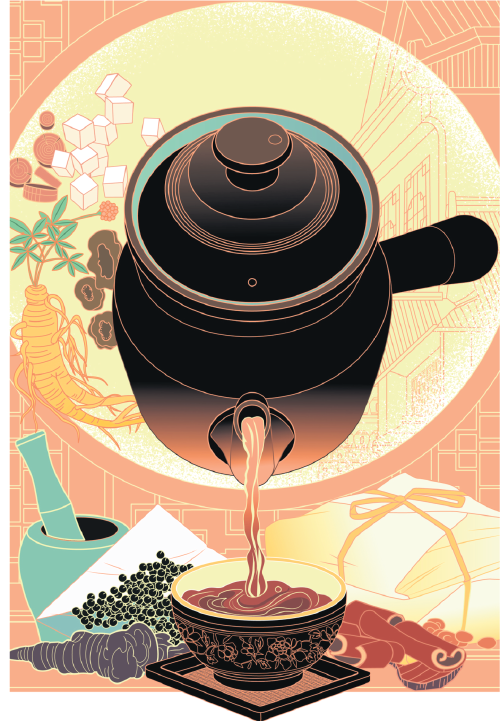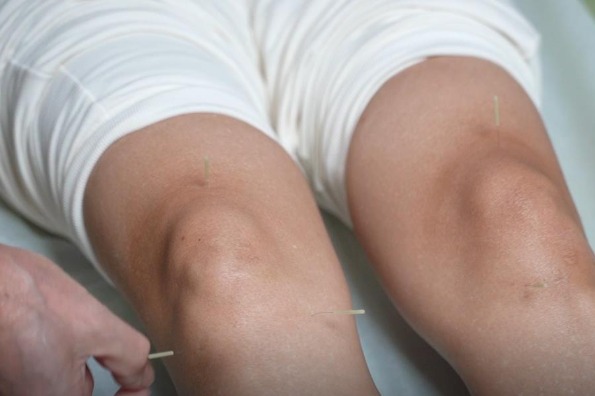Plan aims to give TCM a big boost


Innovation, talent development keys to revitalizing traditional Chinese medicine
China has recently released a plan to revitalize traditional Chinese medicine through a series of major programs aimed at boosting TCM healthcare services, training doctors and promoting innovation, as well as advancing the integration of TCM and Western medicine, according to a circular released on Feb 28.
"TCM played an important role in the fight against COVID-19 … and its development has entered a strategic stage of opportunity," the National Administration of Traditional Chinese Medicine said on March 3 in a statement explaining the circular. "But some urgent problems remain, such as a shortage of systematic programs and platforms focusing on TCM."
Sun Zhicheng, deputy director of the National Development and Reform Commission's Social Development Bureau, said that since the 13th Five-Year Plan (2016-20) period, the central government has dedicated nearly 50 billion yuan ($7.28 billion) to developing and improving TCM-related projects, including upgrading the infrastructure and facilities of 670 county-level TCM clinics.
Meanwhile, another 1.2 billion yuan has been invested in 19 TCM universities. The annual number of undergraduate graduates majoring in TCM or those with higher degrees in the subject rose from 32,000 in 2015 to 46,000 in 2020, he said during a forum held in Shenzhen, Guangdong province, on March 22.
"However, we are also confronting a number of challenges, including a lack of innovation," he said. "The number of new TCM drugs applying for registration and approval has remained at a low level for years, and domestic TCM companies typically invest insufficient funds into scientific research and pay inadequate attention to products."
As a result, Sun said that the total revenues for TCM companies dropped from 780 billion yuan in 2015 to 650 billion yuan in 2019.
He added that some hospitals and health experts do not have a full understanding of the significance of the integration of TCM with Western medicine. The number of experienced TCM practitioners, researchers and grassroots doctors is also lacking.
Addressing challenges
Zhai Huaqiang, a professor at the Beijing University of Chinese Medicine's School of Chinese Materia Medica, emphasized the lack of innovation, multidisciplinary scientific research platforms, clinicians and researchers as some of the key challenges.
"The circular mandates strengthening the implementation of major programs, securing funds and stepping up regular monitoring and evaluation," he said during an interview with the People's Daily newspaper.
"This would be conducive to helping the TCM sector address bottlenecks."
In order to expand medical resources, the circular stated that China will create several national TCM centers, a number of national TCM departments and 130 specialized hospitals and rehabilitation centers that incorporate TCM practices.
Every county-level hospital should have two specialized TCM departments and a TCM promotion center, it added.
The document also stated that around 35 TCM treatment centers for infectious diseases are planned and that TCM should be applied promptly in the prevention and control of such diseases and in the event of public health emergencies.
In the future, a series of key national TCM laboratories and 30 TCM inheritance and innovation centers will be built.
The document stated that 1,200 people will be trained in TCM clinical treatment, ethnic medicine and TCM studies, and free tuition will be given to roughly 7,500 students on the basis that they agree to work in rural areas after.
Li Yu, head of the administration's science and technology department, said that innovative TCM therapies have been developed to treat strokes, lung cancer, diabetes and chronic obstructive pulmonary disease.
He said that one example of TCM innovation is the discovery that arsenic can be used to treat blood cancer.
Chen Zhu, an academician with the Chinese Academy of Sciences and a prominent blood disorder specialist, has successfully demonstrated the workings of arsenic, a substance known for its toxicity and used as an ancient TCM therapy, in targeting and killing specific proteins that keep cancerous cells alive. The finding has helped lift the five-year survival rate of leukemia patients to around 90 percent.
A team led by Liu Baoyan, chief researcher at the China Academy of Chinese Medical Sciences, also discovered the efficacy of acupuncture in relieving incontinence in women.
"The finding has been widely acknowledged by the international community and helps spread acupuncture globally," Liu said.
Liu Liang, an academician with the Chinese Academy of Engineering and a top TCM expert, said that the discovery of the anti-malarial Artemisinin by Nobel laureate Tu Youyou, is another example of the way of pursuing innovation in TCM can be beneficial.
"The traditional experience of TCM should not be lost, but modern technology is also essential to the process," he said.
Blending East and West
The document added that a long-term mechanism designed to coordinate TCM and Western medicine will be set up, including the establishment of 50 flagship hospitals and a number of flagship clinical departments.
The COVID-19 outbreak in Wuhan, Hubei province, in 2020 yielded a fruitful model for the efficient use of both TCM and Western medicine, the National Administration of Traditional Chinese Medicine said.
"Building flagship hospitals is one way of promoting this experience," it added.
Huang Luqi, president of the China Academy of Chinese Medical Sciences, said that TCM has played a vital role in the fight against the virus.
"When influenza, the common cold and COVID-19 are circulating at the same time, TCM aimed at relieving symptoms can be administered at home and prevent hospitals from becoming overstretched," he said.
Huang added that TCM therapies can shorten the hospitalization period in mild and moderate cases, help prevent high-risk patients from becoming even more ill and reduce the mortality rate of critical and severe cases.
"Many recovered patients who report lingering symptoms such as coughing, fatigue and sweating also found TCM medicines effective in alleviating the aftereffects," he said.
In addition, the circular emphasized the need to increase the recognition of TCM globally.
As of September, TCM was available in some form in 196 countries and regions, said Wu Zhendou, head of the administration's international cooperation department.
Xinhua News Agency contributed to this story.
wangxiaoyu@chinadaily.com.cn




